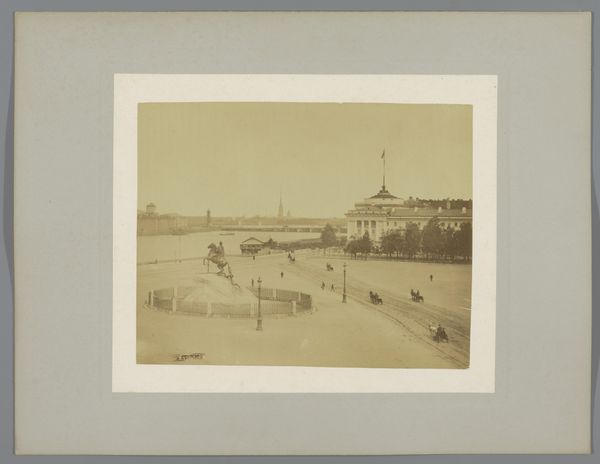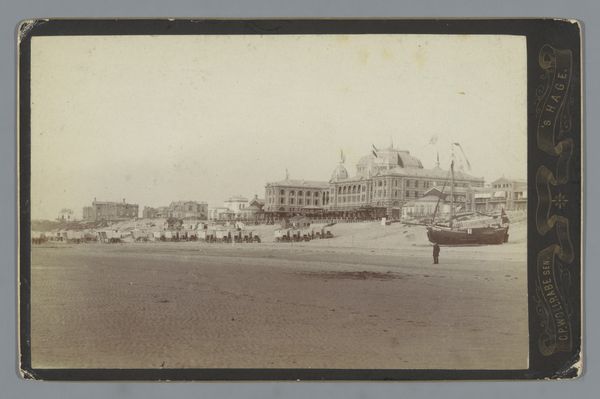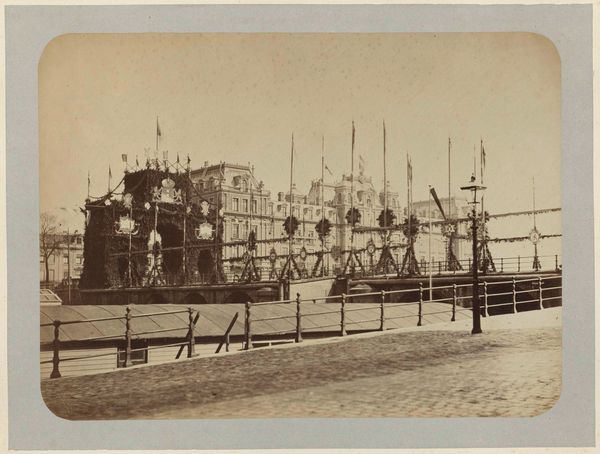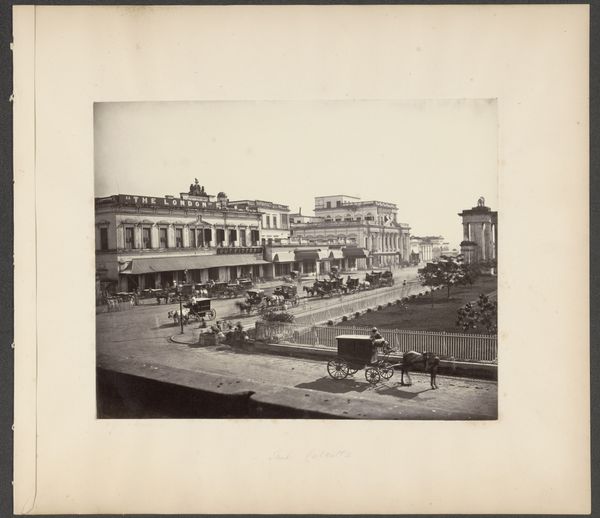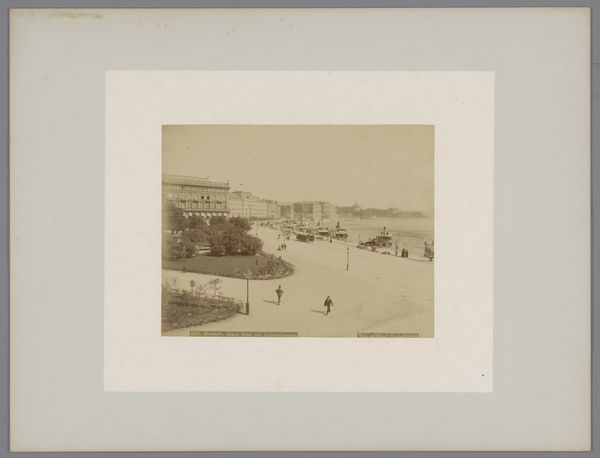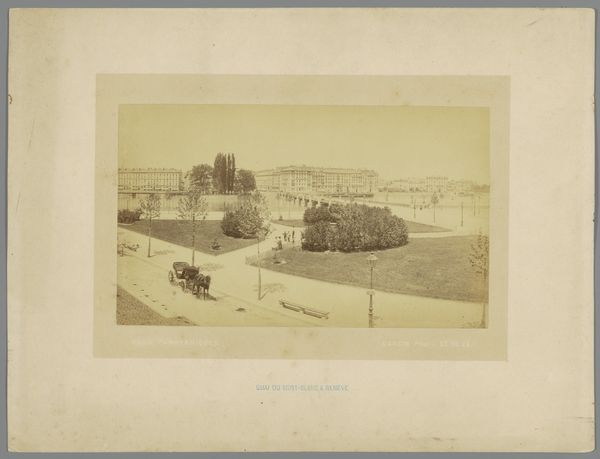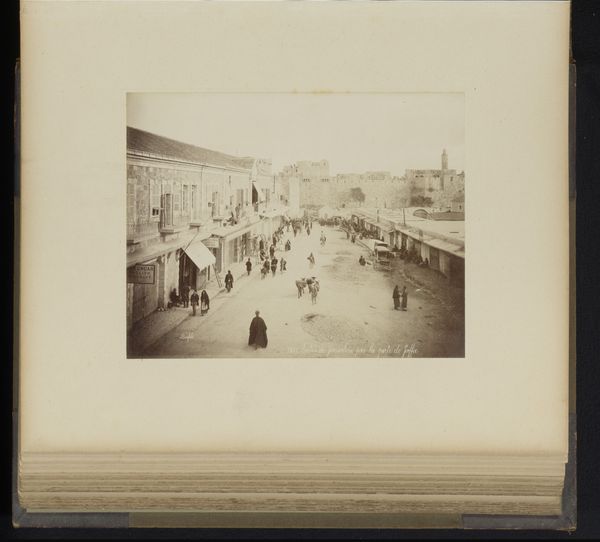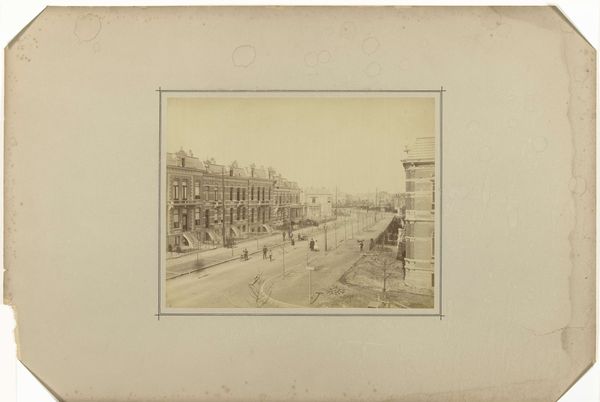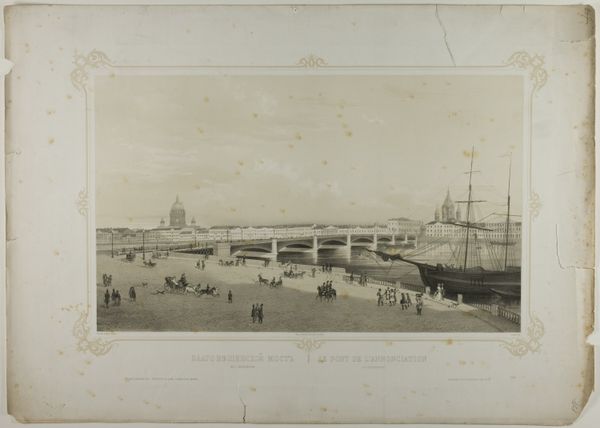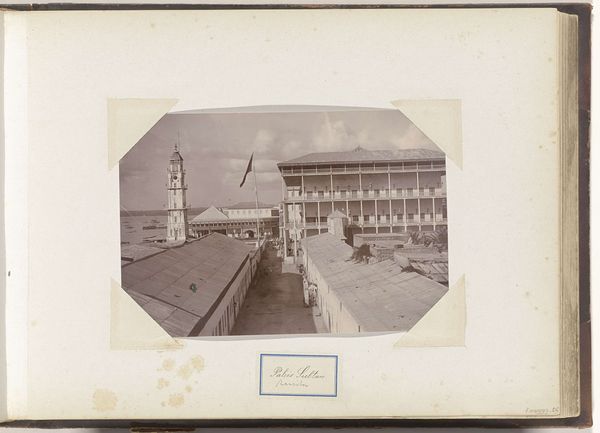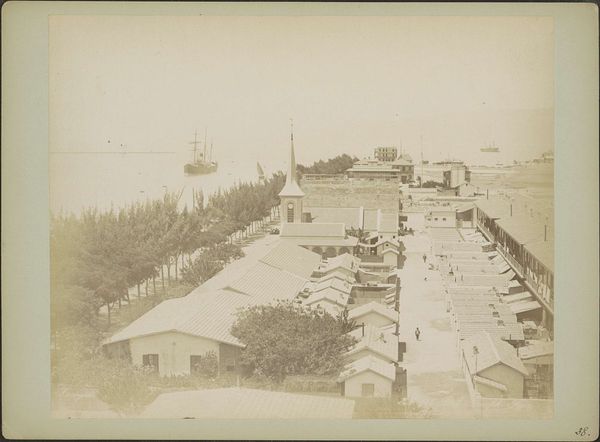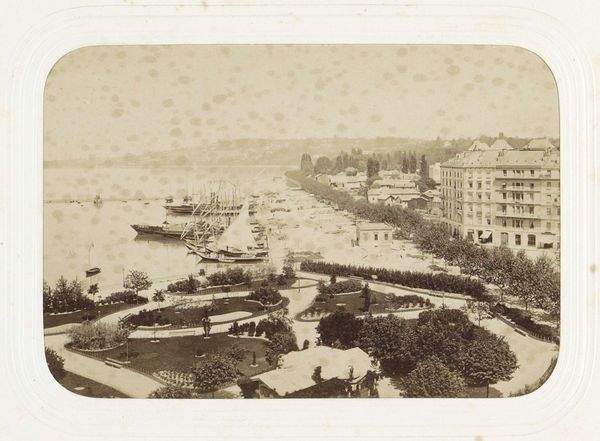
photography, gelatin-silver-print
#
pictorialism
#
landscape
#
photography
#
gelatin-silver-print
#
cityscape
#
genre-painting
Dimensions: height 142 mm, width 205 mm
Copyright: Rijks Museum: Open Domain
Editor: Here we have "Pier van Brighton gezien vanaf de boulevard," a gelatin silver print made sometime between 1880 and 1910 by W.M. Spooner & Co. The scene is bustling with activity, but there's an almost unsettling stillness to the image, like a freeze-frame of a specific social moment. What do you make of it? Curator: That stillness is compelling. I see a depiction of leisure, certainly, but also a carefully constructed performance of class. Think about Brighton as a burgeoning resort town during the late 19th century. Who had access to this kind of leisure? Who is conspicuously absent from this scene? Consider the pier, not just as a physical structure, but as a stage. Editor: That’s interesting! I hadn’t thought about the element of exclusion. So you're suggesting that the photograph is not just a neutral record, but actively participating in a narrative about social hierarchy? Curator: Precisely. And think about the pictorialist aesthetic. The soft focus, the romanticized composition—it all serves to elevate and idealize this scene of bourgeois leisure. Whose stories are not being told through that lens? The unseen labour that allowed for this promenade to exist. Consider gender too - how might the seaside stroll become a space for controlled interactions and surveillance? Editor: So, even in what seems like a straightforward photograph, there’s a complex interplay of power, class, and representation being constructed. I never would have considered this piece in this context. Curator: It’s about questioning the narratives we inherit and examining the absences within them. By interrogating the visual language, we reveal whose stories are deemed worthy of representation and, more importantly, whose are not. Editor: I’ll definitely look at photography differently from now on! Curator: Me too! Every new set of eyes that approaches this piece unearths another potential set of narratives.
Comments
No comments
Be the first to comment and join the conversation on the ultimate creative platform.
